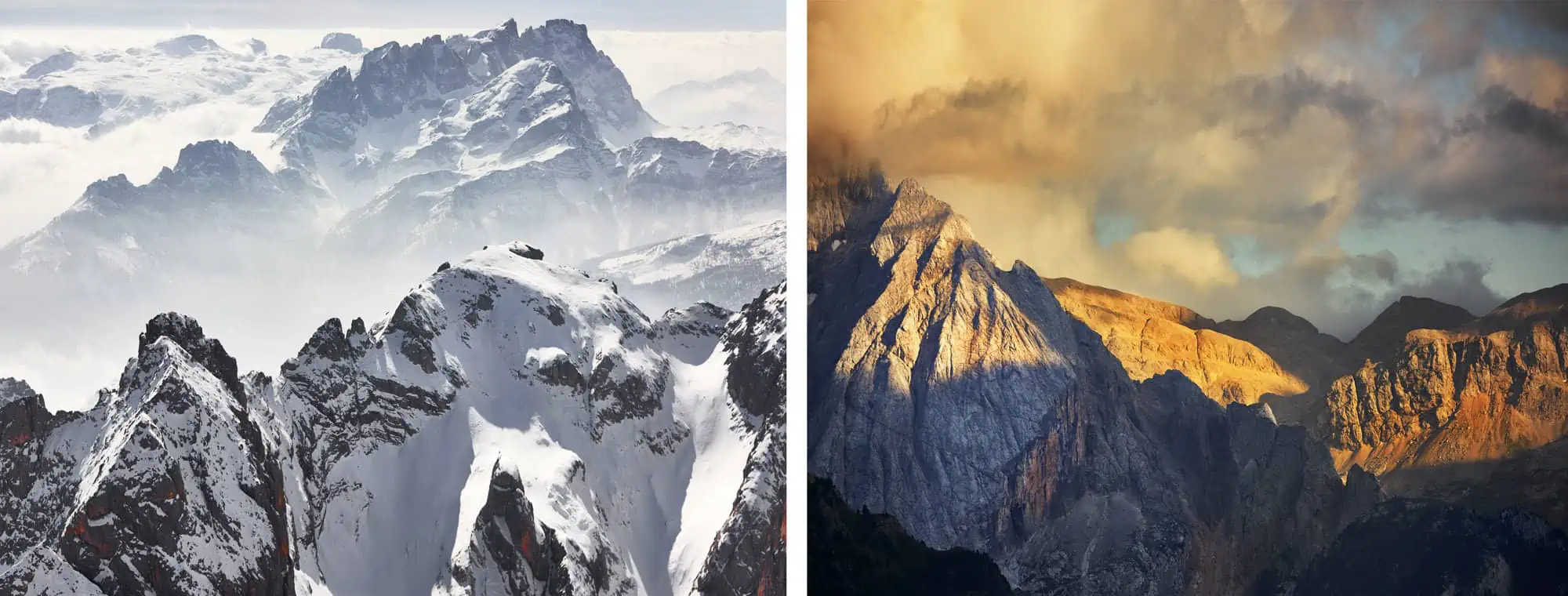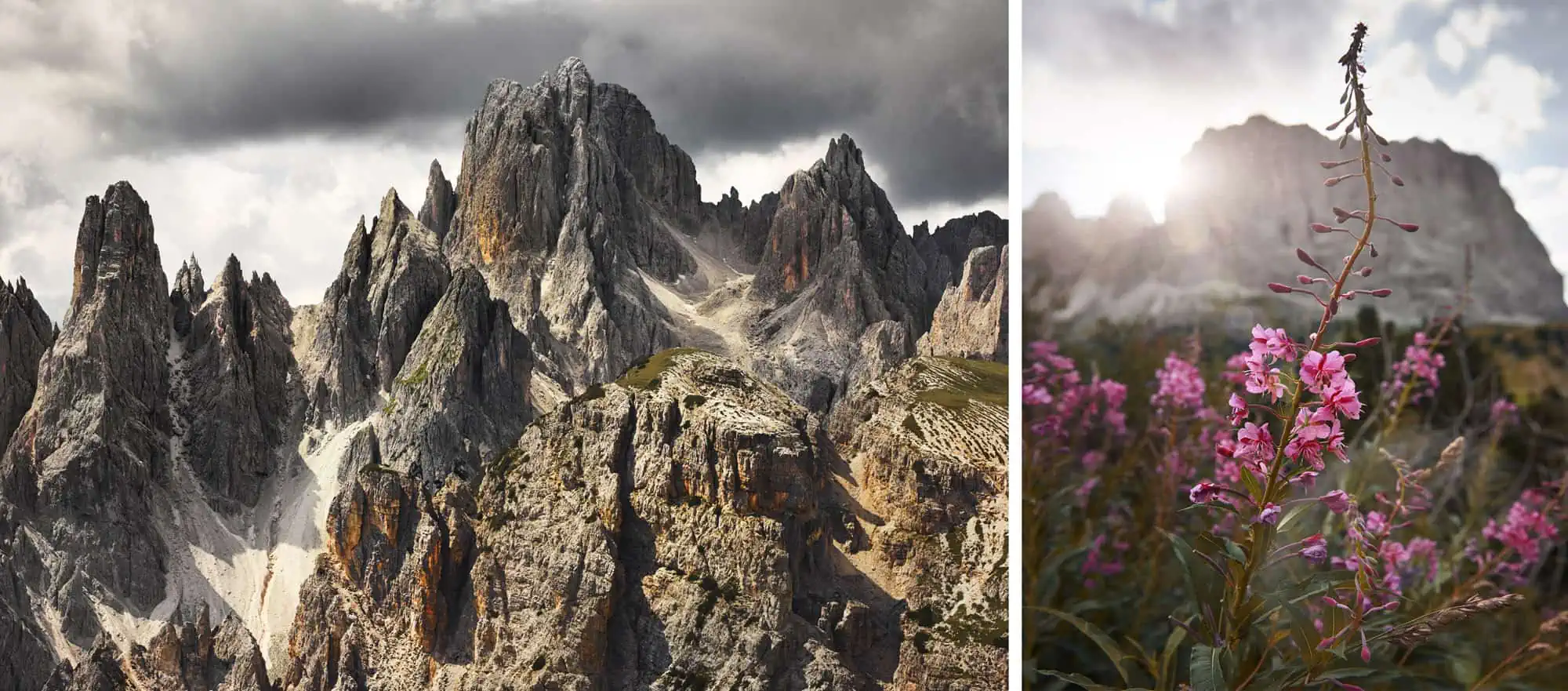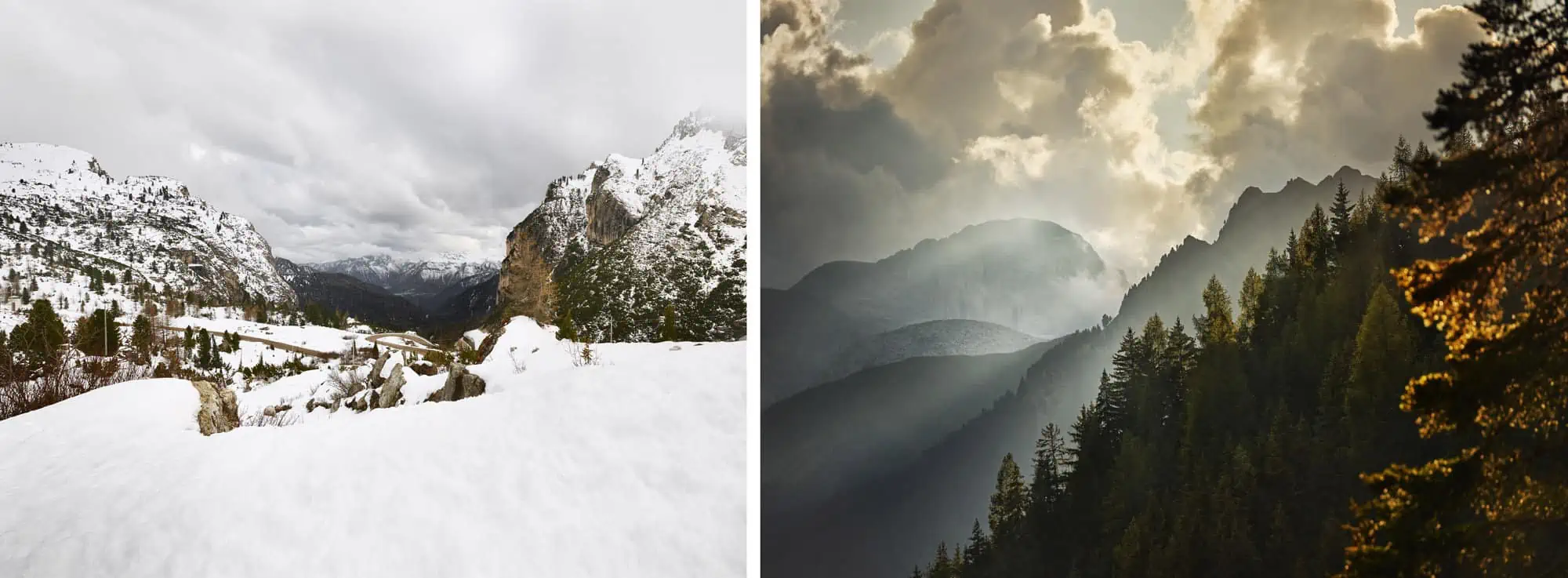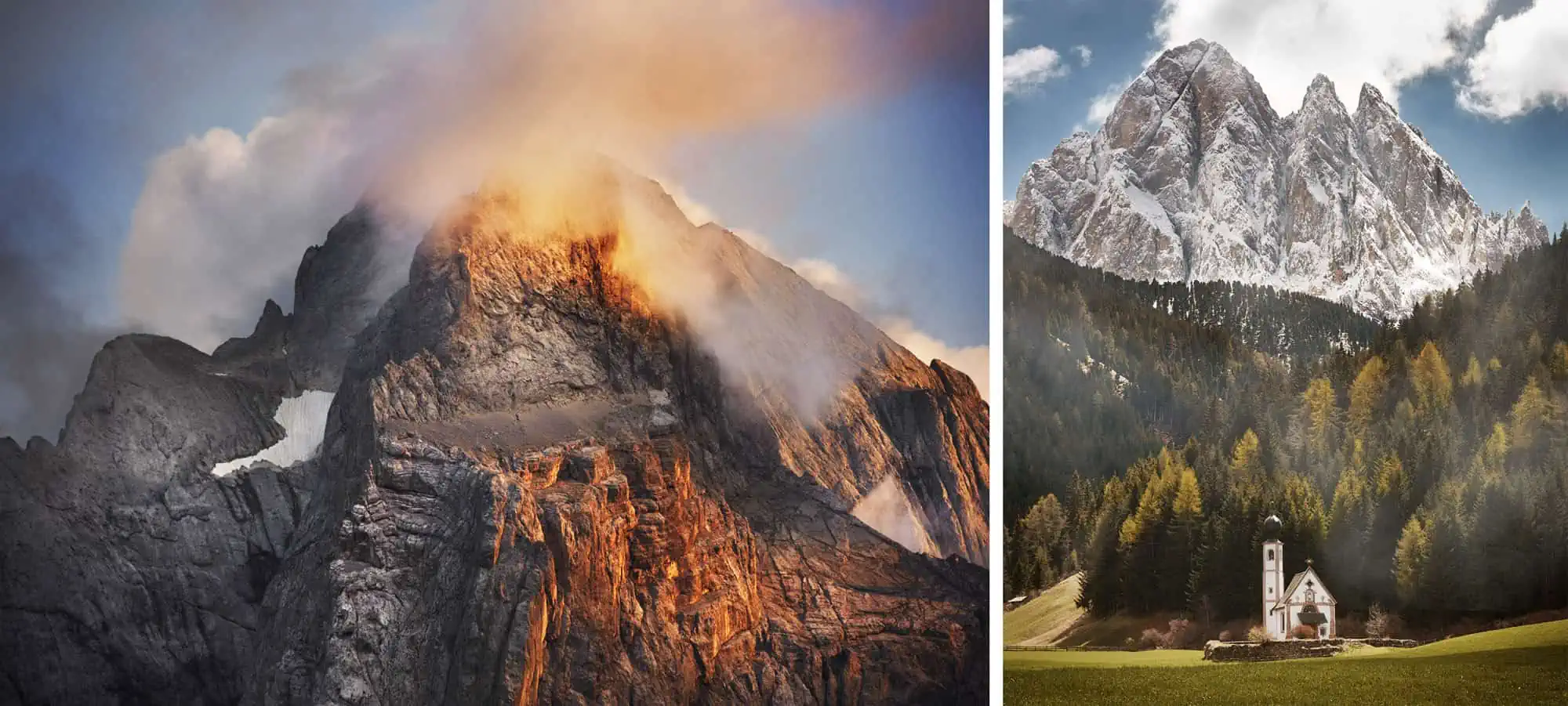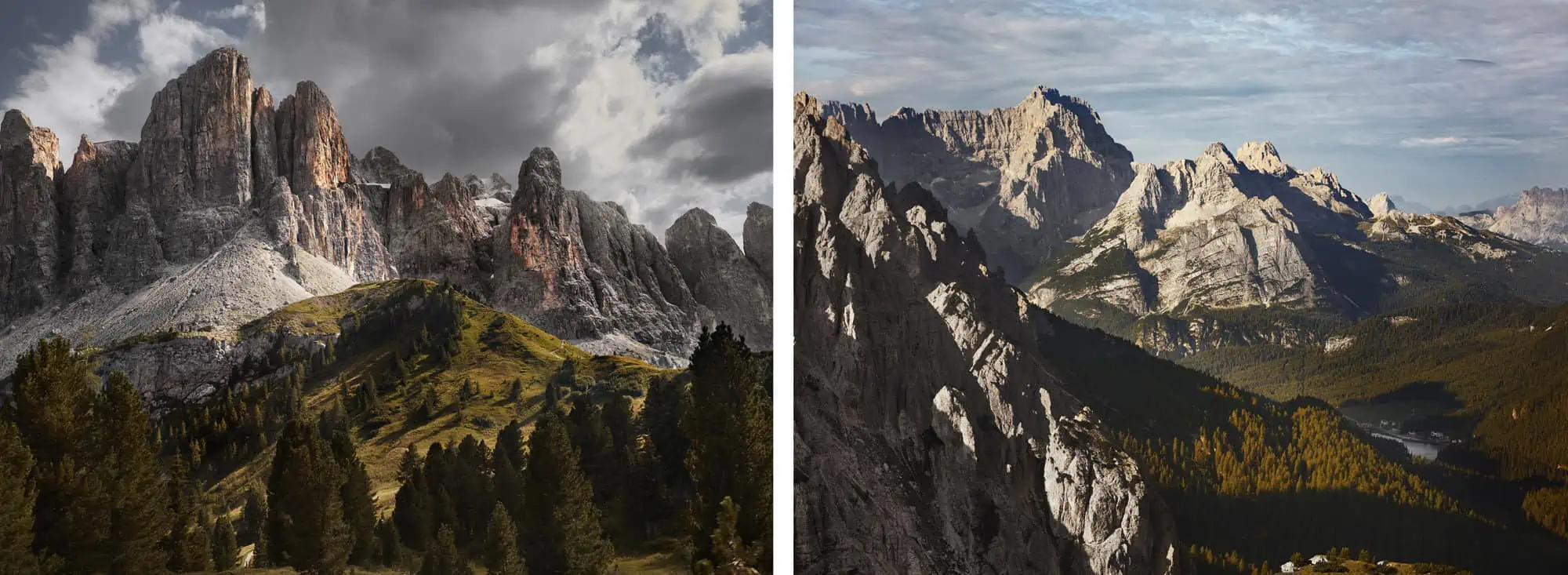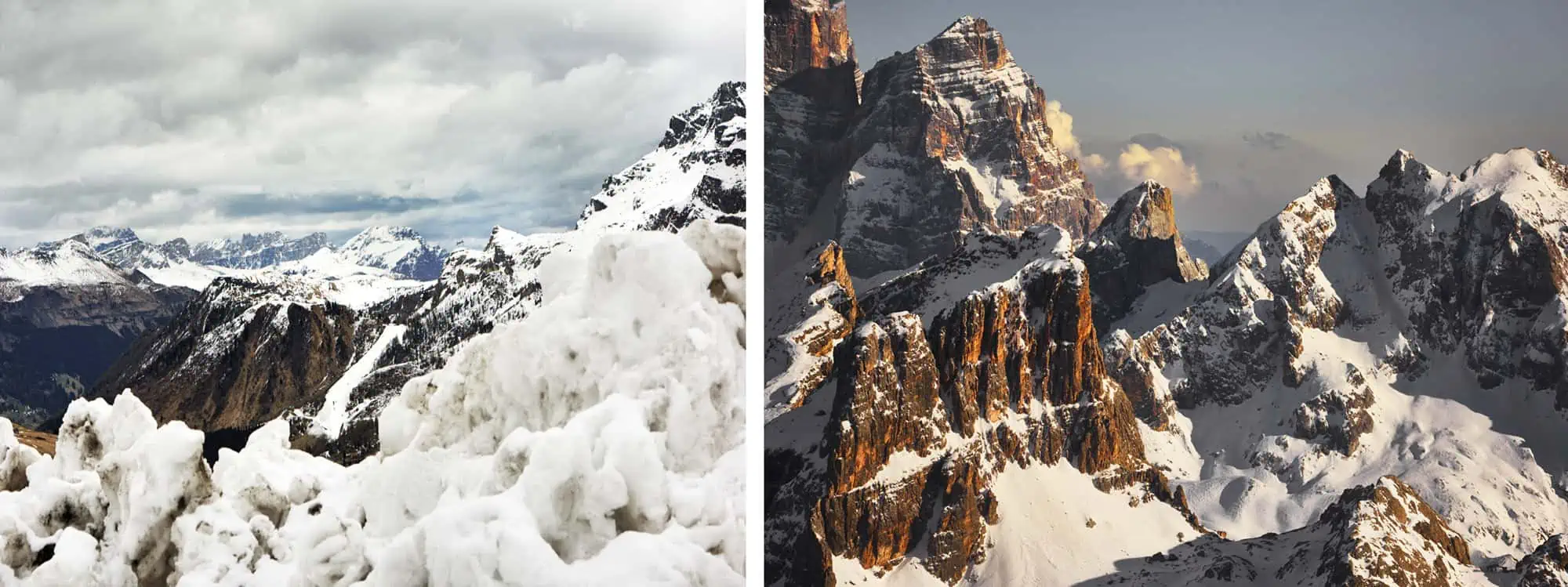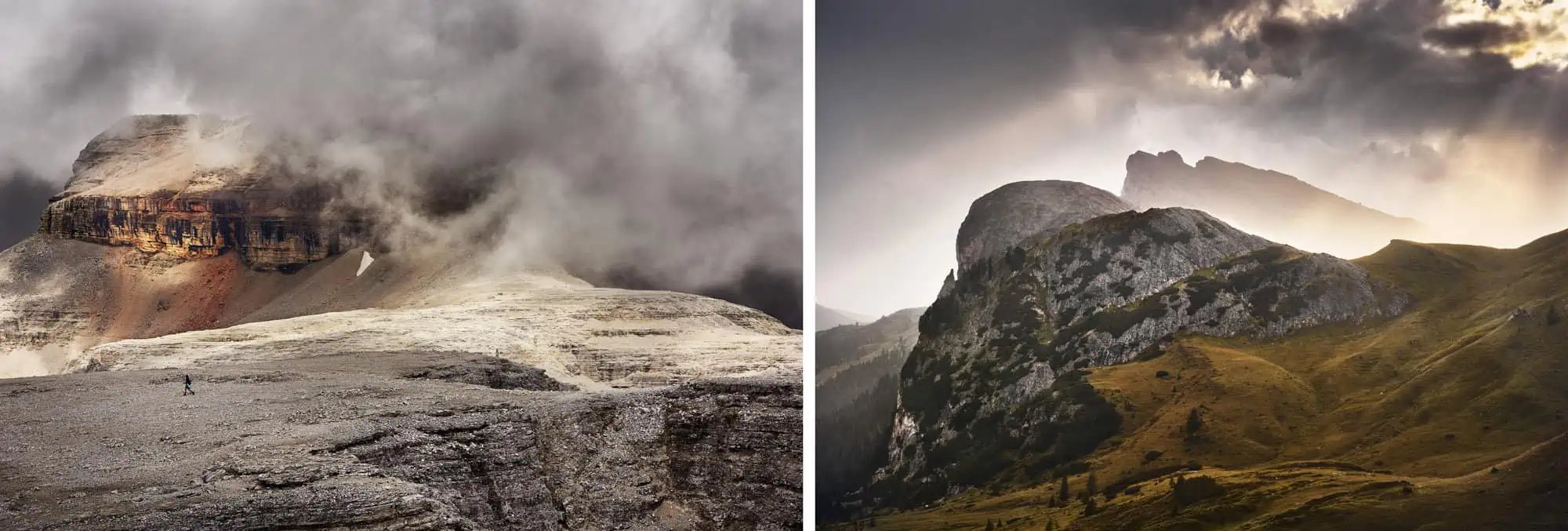The Dolomites, set in the heart of the Alps are one of our favorite places in the entire world, and we find ourselves returning time and time again. What we love about The Dolomites is the huge range of things there are to do in the area from hiking and climbing to mountain biking and touring. It’s a great place to visit in both summer and winter, both providing you a very different experience, but both equally as incredible. Whether you’re planning a trip to Italy to hike some of the trails in the area or just want to take in the mountain experience, you’ll undoubtedly find yourself surrounded by scenery that you will be unlikely to forget anytime soon. The Dolomites has some of the best mountain drives we’ve ever experienced and provide a great experience in their own right, making the scenery in The Dolomites accessible to a huge range of interests. The mountain passes in The Dolomites open up the gateway to some of the best hiking and sightseeing in the region, so it’s incredibly possible to plan your driving routes around other activities too. We’ve put together our favorite mountain drives in The Dolomites that will allow you to get a real sense of the area and the scale and grandeur of this incredible mountain landscape.
How to Get to the Dolomite Alps, Italy
There are a couple of potential ways to get to The Dolomites via plane, but all involve a couple of hours drive afterwards. Depending on where you’re flying from, it may be worth flying into a larger airport and driving than taking a connecting flight. Some of the airports in the area are not huge airports, so it is generally not possible to fly direct transatlantic to the area. Here are some of the airports and driving distances based on staying in Cortina, which is a fairly central hub of The Dolomites, so please adjust accordingly to your location:
Airports Near the Domomites, Italy
- Munich – Germany (fairly large airport, ability to get connecting flights easily) – 4hr30 drive
- Innsbruck – Austria (small airport, flights daily from London) 2hr30 drive
- Salzburg Airport – Austria (relatively small airport, but daily flights from Europe and London) – 3hr50 drive
- Venice Treviso – Italy (good sized airport) 1hr40 drive
Driving All the Way to the Dolomites, Italy
If you want to fully take the experience of driving from home, it’s entirely possible to drive to Cortina in The Dolomites, for example, in 16 hours from London.
Please note that if you’re planning to drive from one European country to another, whilst there are generally no checkpoints, you will need to have a vignette on your windscreen to allow you to do this. This is something that your car rental company should provide you with as part of your car hire. Depending on where you fly to, you should mention to them that you will be travelling to another country as some car rental companies have a small fee for travelling across borders.
Where to stay in the Dolomites, Italy
Cortina is one of our favorite places to stay as it puts you in a great position for so many of the incredible things there are to do in the area, it is also a lovely town itself with a range of great restaurants and bars for most budgets. Cortina also houses a number of fine dining restaurants and health spas close by. As Cortina is a popular hub for tourism, there are many guest houses, hotels, apartments and Airbnb properties. There are also a number of campsites in the area which offer pitches for motor homes, tents and sometimes chalet or hut style accommodation. Prices in the area can really vary. It is entirely possible to stay in any of the other towns or villages in the area, and because most of the towns in the area have ski runs, they’re well connected via road and have good accommodation options also. It is a good idea to look at where the majority of your interests are, what you’ll be doing and what you want to see so you can plan where to stay accordingly.
What’s it Like to Drive in the Dolomites?
We both come from relatively flat places and we’ve often been asked if we find driving in the Dolomites (and the Alps in general) scary. It’s easy to see why this might be a concern for some visitors, and stereotypes of winding mountain roads crumbling into a sheer drop like you see in movies don’t help at all! But in our opinion, the Dolomites are not a dangerous place to drive provided you are aware of the environment around you – that’s something you could say about driving anywhere.
Generally, the roads in the Dolomites – and indeed, all of the European Alps – are very good. Certainly the main roads are as good as you’d expect in any major European country – well surfaced and with safety barriers at the sides – and this carries on to the minor roads too. Though in some cases, narrow roads mean a lack of markings. It’s really only when you get to the very minor roads and lanes leading to some trailheads and smaller communities that road surfaces can start to deteriorate.
In Winter, some of the roads are closed due to heavy snow fall and it’s not unusual to encounter a barrier blocking a road stating the way ahead is closed. Even though you can sometimes drive around these, you should absolutely follow the advice on these barriers and turn back – there’s always an alternative route, even if it means a long diversion. In winter, the snowploughs generally do a great job of keeping the roads clear and even though we’ve had snow chains with us on several occasions, we’ve never once had to use them. If you’re hiring a car on a Winter visit, it will often come with winter-specific tyres that can offer extra grip in icy conditions. Also be aware that rock fall can impact the roads – so be aware of obstructions ahead and use common sense if you see something that might suggest you need to stop.
Bear in mind, though, that the Dolomites are high mountains and many of the roads have steep gradients and hairpin bends. If your car isn’t so powerful it will struggle on these and you might find your progress very slow – even if it isn’t fully loaded. For this reason, if we’re hiring a car on a visit to the Dolomites, we’ll generally try to specify a slightly more powerful model rather than just getting the cheapest option (which is usually a car intended for city driving). You don’t specifically need a high-performance car and you definitely don’t need a 4×4, but something with a little more power is generally preferable. Also, if you’ve never driven on mountain passes and hairpin bends before and you have the option to hire a vehicle with automatic transmission, you might find this can be a nice convenience – though it’s far from essential.
Best Time to Visit the Dolomites
The Dolomites are beautiful all year round, and because of the ski season, you’ll find that the majority of the roads listed here are open all year round. The only exception here is the Tre Cime toll road, which is closed in winter and is instead a ski piste, although it is still possible to travel on this road via ski mobile and is a pretty fun experience in its own right. Having experienced The Dolomites in both summer and winter, we can safely say neither visit has been the same and each provides an incredibly different feel. It’s incredible to see the mountains in full summer (June – September, or even October in mild Autumns) but it is equally incredible to see the sights of a winter wonderland full of snow and beautiful snowy mountain vistas (Dec – March/early April).
Top Eight Drives in the Dolomites:
#1 Passo Pordoi
With its 28-hairpin bends, some of the most dramatic scenery in the whole of The Dolomites takes its home on the Passo Pordoi. The pass is located between the Sella group in the North and the Marmolada group in the South, topping out atan altitude of 2,239m. It is also possible to access the Dolomites Panorama Terrace via cable car from the top of the pass taking you to Sass Pordoi at 2950m for some incredible hiking and scenic views.
#2 Passo Falzareggo
At 15km in length, Passo Falzareggo is a joy to drive.The nameFalza Regomeansfalse kingand refers to a king of the Fanes, who was supposedly turned to stone for betraying his people. That aside, this provides a great drive that can be connected to other drives from Cortina.
#3 Sella Pass
One of the most famous roads in The Dolomites, letting people move from the Fascia Valley of Trentino to South Tyrol and one of the important land marks in the UNESCO Dolomites. It’s worth keeping in mind that as of 2018, the local administration have limited access to the Sella Pass where only 350 cars per day will be allowed to drive over. This is down to wanting to regulate and control the air and noise pollution in this area of the mountains, where some 5000 cars per day were driving before. You can drive the famous mountain pass by getting a free Dolomitesvives pass online, although this will depend if the scheme is still running in the summer after 2018, and you can also get a pass from one of the information centres whilst heading up to the Sella Pass.
#4 Passo San Pellegrino
Featuring the Marmolada, the highest mountain in the Dolomites, and some of the sunniest parts of The Dolomites, the Passo San Pellegrino is well worth working into your itinerary.
#5 Passo Fedaia
Without a doubt, one of our favorite mountain passes in the whole of The Dolomite region.The views extend over some of the most incredible Dolomites peaks such as Sassongher, Sella, Civetta, Marmolada, Sassolungo and Cir Towers. It is well known for its Giro d’Italia fame and was also used as a location for the 2003 film The Italian Job.
#6 Passo Gardena
Some of the most stunning scenery in the whole region can be found on the Passo Gardena with views of the Sella Group, the Cir Peaks in the Puez Group, the Puez-Odle Nature Park, the Sassolungo Group, the Val Badia valley and the legendary Fanes Group.
#7 Chiesa di Santa Maddalena
Not specifically a touring route so to speak, but the route to St Magdalena church takes you through some of the most spectacular scenery in the Puez-Odle Nature Park, ending with views of probably one of the most famous, mountain surrounded churches in the whole of the Alps. This drive could easily be added onto another tour or based around a hike.
#8 Tre Cime Toll Road
If you’re planning to take the hike around the Tre Cime Di Lavaredo, you’ll take the toll road up from Misurina. The toll road is in operation when the road is clear of snow, which is usually from June through to November. It’s worth trying to find information in advance, but the toll road up to Rifugio Auronzo where the impressive views of the Tre Cime and the groups around begin is well worth it. Be sure to arrive early – there can be long lines of traffic to get in and up the road as parking spots at the top to begin the classic hike go quickly. We arrived at 6am when we last did this hike and it was already starting to get busy. It is possible to head up this road in winter as well by ski mobile where services run up to the Tre Cime all day from roughly 9am – 3:30pm, this can be taken from the same car park as you would park in summer.


